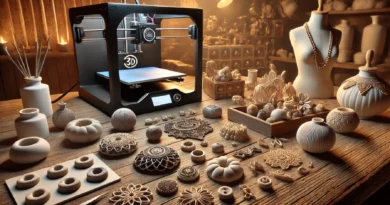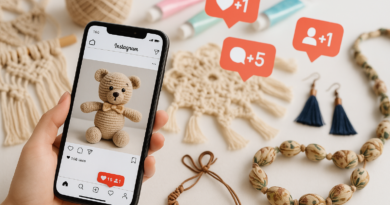The Cool Side of Handicrafts: Copyrights, Trademarks, and Regulations
The world of handicrafts is driven by creativity, passion, and dedication. Each piece created carries the identity of its author and often cultural and emotional values. However, beyond artistic skill, it is essential for the artisan to be aware of the cool side of handicrafts, especially regarding copyrights, trademarks, and regulations involved in the activity.
Many artisans start their businesses informally, selling pieces at local fairs, on social media, or through online stores. At first, it may seem exaggerated to think about legal formalities, but ignoring these issues can lead to serious consequences in the future. Besides protecting your own creations, knowing the current legislation helps avoid lawsuits and ensures greater credibility in the market.
In this article, we will explore the cool side of handicrafts in a straightforward and practical way. We will understand how copyrights work, the importance of trademarks, and the main regulations that involve this profession so rich in creativity. If you are an artisan or intend to become one, this content is essential for your sustainable growth.
Understanding Copyrights in Handicrafts
Copyrights are a set of laws that protect intellectual works such as music, books, paintings, and, of course, handicraft pieces. From the moment you create something original, you automatically acquire rights over that creation, even without formal registration. However, registering with institutions like the National Library or specific organizations for visual arts strengthens the proof of authorship and facilitates eventual legal proceedings.
Imagine you develop an exclusive line of cloth dolls with unique features. If someone else copies your work and sells similar products, the registration of your copyrights can be your greatest ally in seeking justice. Moreover, legal recognition adds value to your work, demonstrating professionalism to clients and business partners.
How to register your Copyrights?
The process is simpler than many think. First, gather detailed photos of your product and descriptions that demonstrate its unique features. Then, access the website of the responsible agency and fill out the indicated form. Usually, there is a small fee to be paid. After approval, you will have a certificate that attests to your authorship.
The Importance of Trademarks for Artisans
While copyrights protect the creation itself, trademarks protect the identity of your business: name, logo, slogan, and even your product packaging. Registering a trademark is essential for those who wish to build a strong market presence and prevent competitors from taking advantage of their success.
For example, if you sell your pieces under the name “Encanto Artesanal” but do not register this brand, someone else might use it—or even register it before you—and benefit from the reputation you have built. Registration of trademarks is done with the INPI (National Institute of Industrial Property) and guarantees exclusive use throughout the national territory.
Step-by-Step Guide to Register a Trademark
- Preliminary search: check if a similar trademark is already registered.
- Registration request: access the INPI portal and fill out the trademark registration form.
- Process monitoring: keep an eye on INPI publications and deadlines for possible appeals or requirements.
- Granting: once approved, your registration will be valid for 10 years and can be renewed.
Registering a trademark is not just an act of protection; it is also an investment in the identity and future of your handicraft business.
Main Regulations Affecting Handicrafts
In addition to copyrights and trademarks, it is important to understand the regulations surrounding handicraft activities. Although handicrafts are often informal activities, formalization can open doors to important benefits such as access to credit lines, participation in official fairs, and sales to the government.
For those who wish to formalize their business, the most common path is to become an MEI (Individual Microentrepreneur). As an MEI, the artisan obtains a CNPJ (Business Registration Number), can issue invoices, and contributes to Social Security, ensuring benefits such as retirement and sick leave. The process is simple and can be done online through the Entrepreneur Portal.
Another important regulation concerns product safety and quality. If you manufacture toys, cosmetics, or artisanal food, you must comply with specific standards from Anvisa (National Health Surveillance Agency) or Inmetro (National Institute of Metrology) to ensure your products do not pose risks to consumers.
Conclusion: Art and Legality Walking Together
Respecting the cool side of handicrafts does not mean limiting creativity; on the contrary, it is ensuring that your talent is recognized, valued, and protected. Knowing and correctly applying the laws on copyrights, trademarks, and regulations is a competitive edge in the handicraft market.
If you haven’t considered these aspects yet, now is the ideal time to act. Don’t wait for problems to appear before seeking information. Protect your art, strengthen your business, and earn your place securely and respectfully.
After all, nothing is fairer than seeing your dedication and creativity legally recognized and protected.



